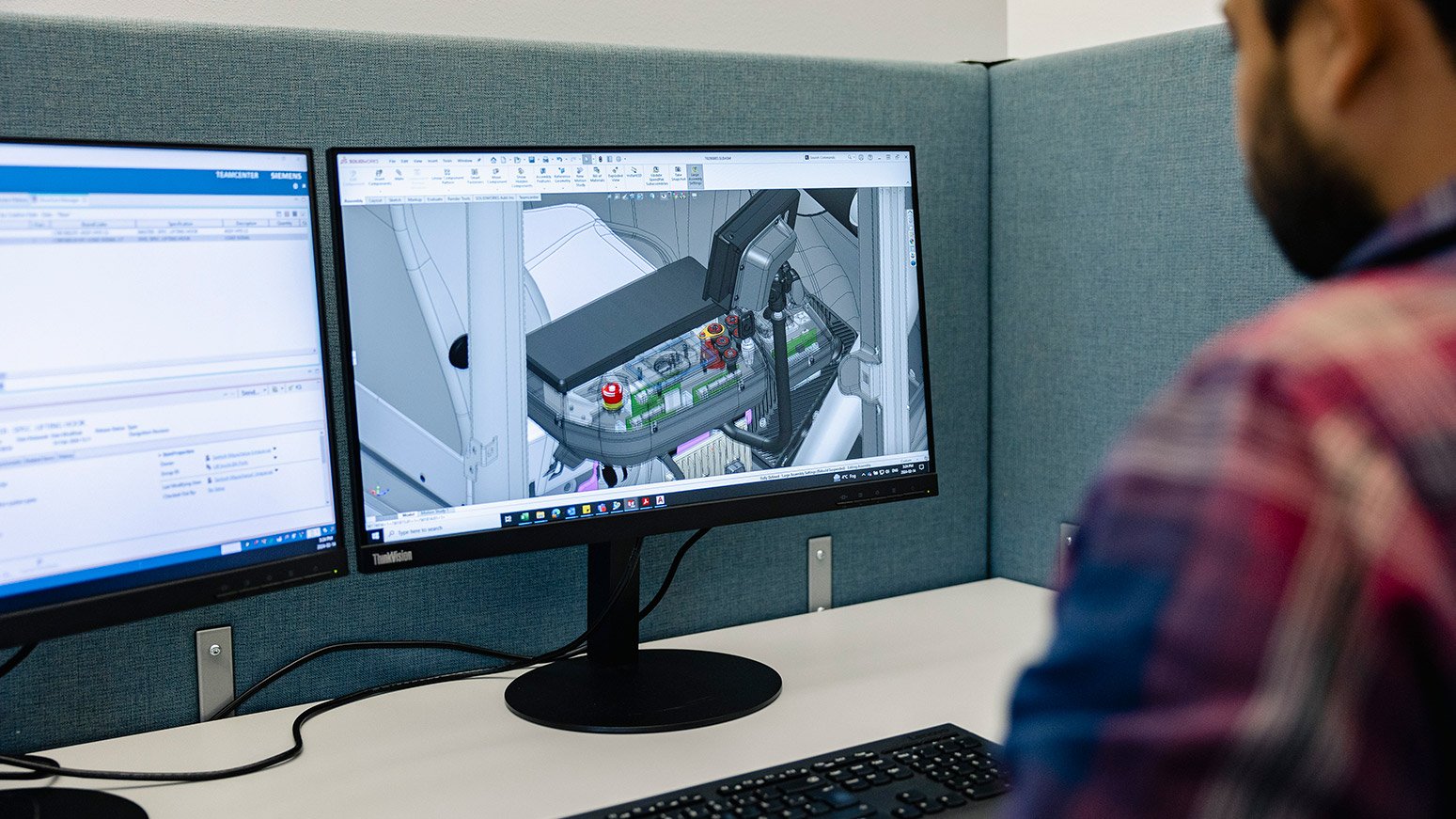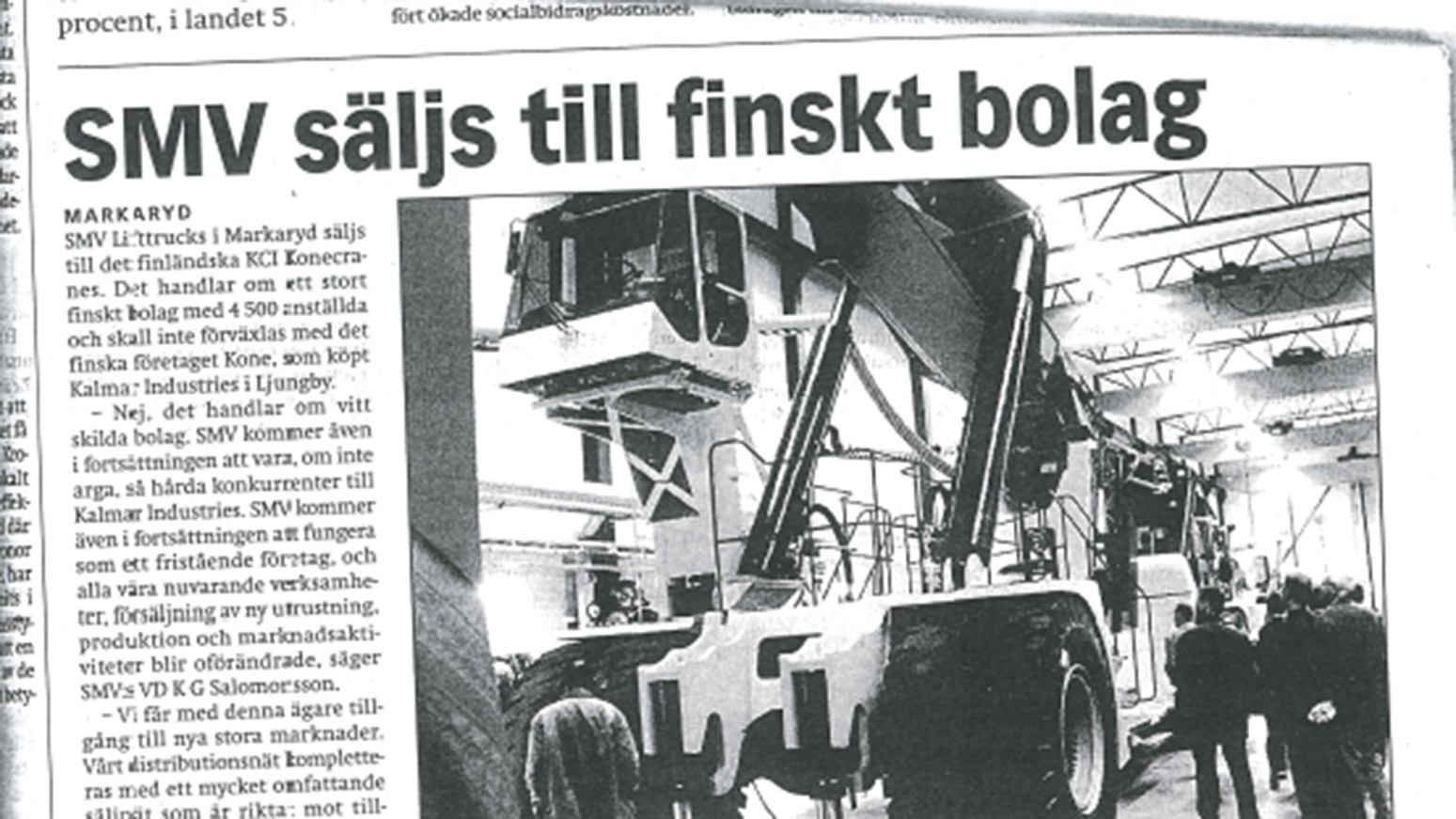Uplifting blog

6 features boosting lift truck ergonomics
Lift truck drivers play an important role in many industrial settings like ports, sawmills and warehouses. Everyday, they spend several hours operating heavy machinery, making ergonomics crucial for their health, safety and performance. An optimal lift truck cabin is one that prioritizes ergonomic design principles, catering to the specific needs and requirements of the driver. Here are 6 key factors that define a truly ergonomic lift truck cabin:
01 Adjustable seating
A comfortable seat is paramount for lift truck operators who spend extended periods seated. As drivers come in many different lengths, an ergonomic seat should be adjustable in multiple dimensions, including height, angle and lumbar support. This allows drivers to customize their seating position to promote good posture and reduce the risk of musculoskeletal issues.
02 Clear visibility
Visibility is essential for safe and efficient operation of lift trucks. The cabin should offer unobstructed views of the surrounding area, with large windows and strategically positioned mirrors to minimize blind spots. Enhanced visibility improves safety, and minimizes operator fatigue by reducing the need for constant head movement.

03 Intuitive controls
The layout and accessibility of controls within the cabin are crucial for efficiency and safety. Controls should be within easy reach of the operator and arranged logically to minimize reaching or straining movements. Intuitive design reduces cognitive load, enabling drivers to focus on their tasks without unnecessary distraction.
04 Noise and vibration reduction
Lift trucks can generate noise and vibrations during operation, which can contribute to driver discomfort and fatigue. An ergonomic cabin should be designed to minimize noise levels and dampen vibrations, creating a quieter and more comfortable working environment. This can be achieved through soundproofing materials, improved engine and hydraulic system design, and vibration-dampening technologies.
05 Climate control
Temperature and humidity levels within the cabin can impact driver comfort and concentration. An ergonomic lift truck cabin should be equipped with effective climate control systems, including heating, ventilation and air conditioning to maintain a comfortable working environment in all weather conditions.
06 Accessibility
Easy ingress and egress are essential for lift truck operators who frequently enter and exit the cabin throughout their shift. Steps, handholds and grab rails should be ergonomically positioned to reduce the risk of slips and falls.

The Konecranes OPTIMA cabin
The OPTIMA cabin from Konecranes Lift Trucks is characterized by great comfort, outstanding spaciousness and superior visibility. With the OPTIMA cabin, Konecranes set a new standard for lift truck ergonomics, promoting the well-being of operators.
Designing good ergonomics is an ongoing work. Konecranes continues to improve lift truck health, safety and performance, providing the drivers a great place to work.
Read more about the OPTIMA cabin >>
Related Articles

How electric forklifts improve productivity
Revolution or evolution? Is electrification really a transformation or is it just “marketing hype”...

2004 – Welcome Konecranes
After a successful first decade, many of the goals of the revitalized SMV Lifttrucks were...
2 Minute Read

Better health with good ergonomics
To promote better health and well-being in workplaces globally, Konecranes implements an extensive...
